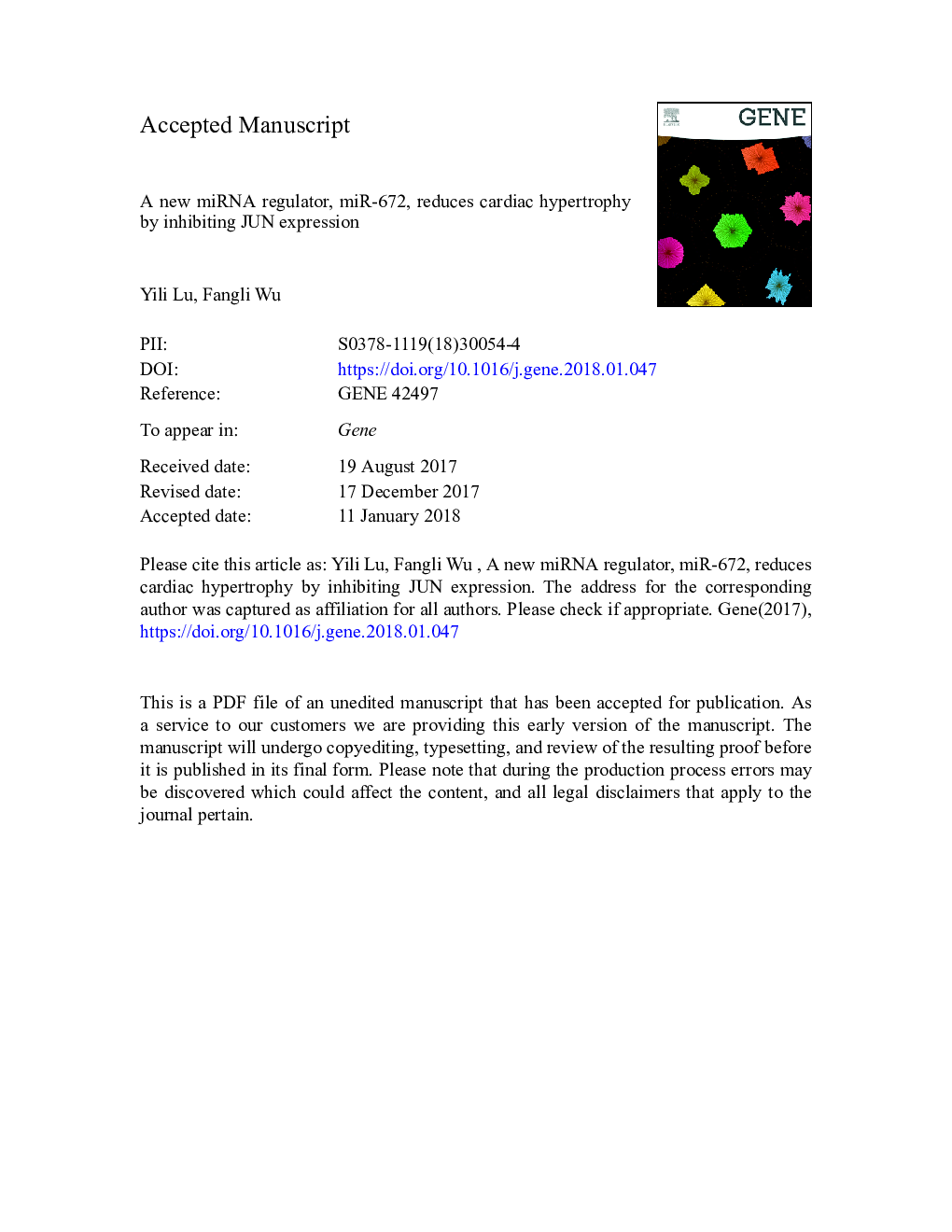| Article ID | Journal | Published Year | Pages | File Type |
|---|---|---|---|---|
| 8645503 | Gene | 2018 | 46 Pages |
Abstract
Cardiac hypertrophy is one of the initial symptoms of many heart diseases. We found that miR-672-5p may participate in the regulation of heart disease development in mouse, but the association between miR-672-5p and cardiac hypertrophy remains unclear. In the present study, we found that the abundance of miR-672-5p decreased in hypertrophic cardiomyocytes induced by phenylephrine, angiotensin II (Ang II) and insulin-like growth factor 1. Putative target genes of miR-672-5p were identified using four pipelines, miRWalk, miRanda, RNA22 and Targetscan, and a total of 834 genes were predicted by all four pipelines. Among these target genes, 98 were associated with the development of heart disease. PPI networks showed that the Jun proto-oncogene product (JUN), a subunit of the AP-1 transcription factor, had the highest node degree, and it was defined as the hub gene of the PPI networks. Luciferase assays showed that miR-672-5p bound to the 3â² UTR of the JUN gene and decreased luciferase activity, indicating that JUN is a target of miR-672-5p. Finally, we found that increasing the abundance of miR-672-5p in cardiomyocytes controlled the relative cell area in Ang II-stimulated hypertrophic cardiomyocytes. Correspondingly, the abundance of JUN, a target of miR-672-5p, was decreased in hypertrophic cardiomyocytes on both mRNA and protein levels, implying that miR-672-5p had suppressive effects on cardiac hypertrophy through regulating the expression of Jun in cardiomyocytes.
Keywords
PPIsAP-1ANGIIIgf1Angiotensin IIdifferential expressionMolecular functionProtein–protein interactionsKEGG یا Kyoto Encyclopedia of Genes and Genomes Kyoto Encyclopedia of Genes and Genomesinsulin-like growth factor 1phenylephrineUTR یا untranslated regions untranslated regionMouseMicroRNAMiRNACardiac hypertrophyactivator protein 1Target genesJun
Related Topics
Life Sciences
Biochemistry, Genetics and Molecular Biology
Genetics
Authors
Yili Lu, Fangli Wu,
